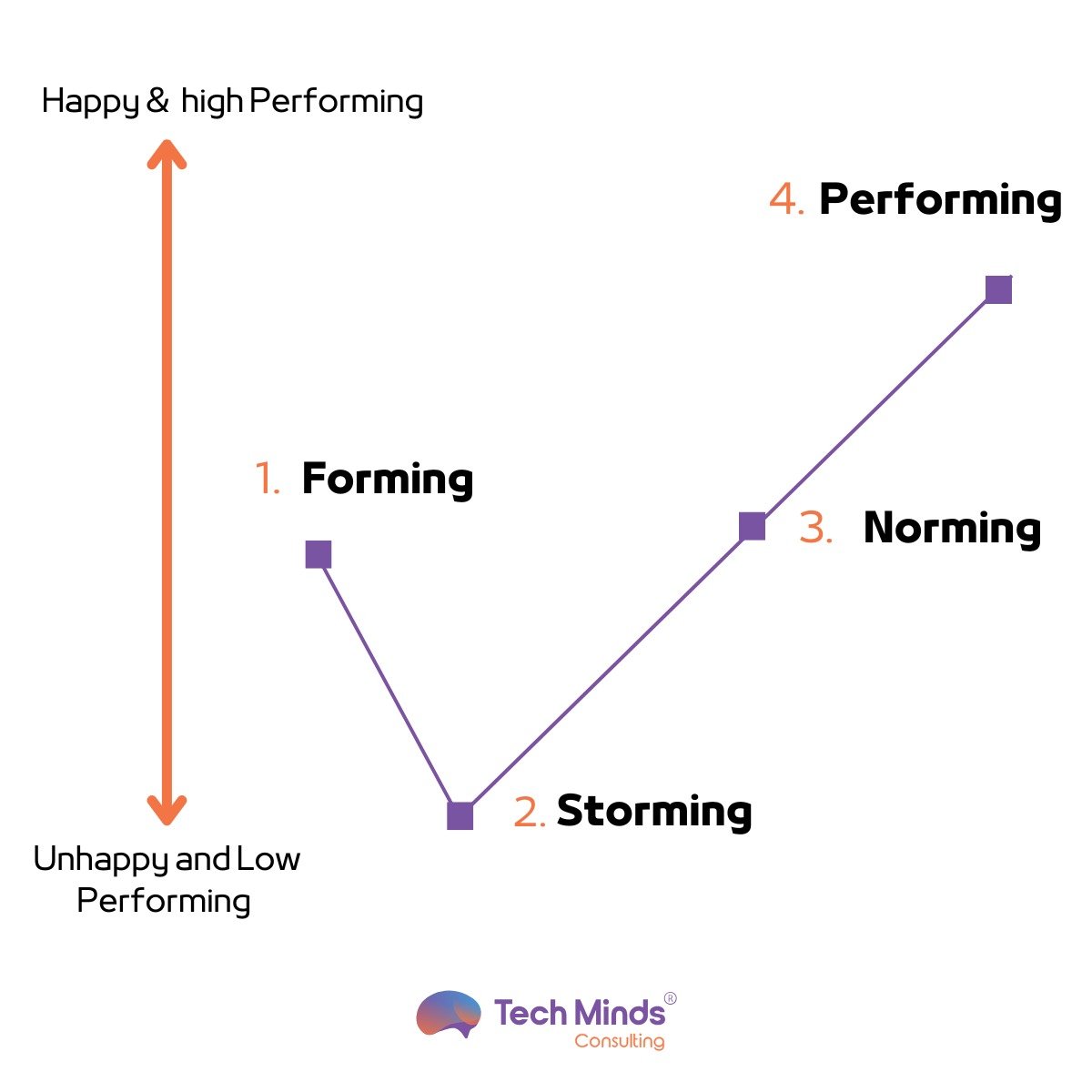What Makes Agile Teams Different? Key Secrets from Top Performers Benefits of technology consulting services: by Baha Al-akhras What is an Agile …
by Baha Al-akhras

An agile team brings together a small group of professionals who work together to create value through iterative work cycles. Many people get it wrong – agile isn’t just another methodology. It’s a mindset that accepts new ideas, values customer feedback, and puts continuous improvement first.
The agile meaning goes way beyond simple project management techniques. These teams live by four fundamental values from the Agile Manifesto. They value people and interactions more than processes and tools. Working solutions matter more than detailed documentation. Teams focus on working with customers rather than negotiating contracts. They adapt to change instead of sticking to rigid plans.
These values shape how agile teams structure works in practice. Customer satisfaction comes first through quick and steady delivery of valuable work. Teams welcome changes to requirements at any stage. This gives customers a competitive edge. Working products reach customers frequently – every few weeks or months. Teams prefer shorter delivery cycles when possible.
Agile self organizing teams keep business stakeholders and developers talking every day throughout projects. Projects revolve around motivated people. Teams trust them and give them the support they need to succeed. Face-to-face talks remain the quickest way to share information, even with today’s advanced communication tools.
Working products show real progress. Green practices help teams keep their momentum going strong. Technical excellence and good design make teams more agile. Teams focus on simplicity by maximizing work they don’t need to do.
Traditional teams usually follow a step-by-step “waterfall” approach. Agile teams take an iterative, incremental path. This creates several key differences:
Agile teams perform better than traditional ones in fast-changing environments because they stay flexible and adapt quickly.
🔄 Need help adopting agile across your org? Our Agile Transformation Services are built to guide your teams.

Successful agile teams thrive on their unique structural design that challenges traditional organizational hierarchies. A closer look at this structure explains why agile approaches deliver better results in any discipline.
Cross-functionality serves as the life-blood of effective agile self organizing teams. These teams bring together people with diverse skills who define, build, test, and deliver value incrementally. Team members don’t work in silos. They collaborate across operational areas, including developers, testers, designers, and business analysts.
The framework highlights two key roles. The Product Owner guides the product vision and prioritizes features. The Scrum Master aids the process and clears obstacles. In spite of that, a true agile teams meaning goes beyond assigned roles. The team shares collective ownership and responsibility.
These teams stand out through their collaborative spirit. Members unite toward shared product goals and encourage “T-shaped” skills development. This combination of deep expertise in one area and broad knowledge across others creates adaptable teams that support each other’s work.
🧠 We help startups assemble agile, cross-functional teams from day one. See how our Startup Services support your journey.
🧭 Our consultants can embed directly as Product Owners or Scrum Masters. Learn more about our Agile & Technical Services.
Studies show an ideal team size for agile implementation. The Scrum Guide recommends “fewer than 10” members. Teams with 4-5 people hit peak productivity. Research points to 4.6 team members as the sweet spot – not too small, not too large.
Small teams make practical sense. Larger groups create exponential communication paths that slow progress. Big teams also face “social loafing” – people put in less effort when their work blends into the group.
Successful agile teams structure shows three key traits. Teams work without hierarchy, removing extra management layers for self-management. They balance flexibility with framework – adapting practices while following core principles. Control spreads across the team, with continuous adaptation replacing rigid plans.
This thoughtful structure helps agile teams succeed where traditional organizations struggle. They adapt quickly while staying focused and united.
Bruce Tuckman first mapped out the trip of agile teams in 1965. His model shows a predictable yet dynamic path that remains vital to understanding how teams develop. Teams evolve from individual contributors into unified groups.

Agile self organizing teams move through four key phases in Tuckman’s model:
Team development moves in cycles rather than straight lines. Teams return to earlier stages when big changes happen—new members join, strategy shifts, or projects end. One expert says, “The team development cycle starts over more often than you might think”.
Agile meaning turns change into a competitive edge. Teams build adaptation into their work through well-laid-out feedback loops during and after development cycles.
These feedback systems help teams “stay in the loop and up to date on changing requirements”. Teams use regular retrospectives after each sprint to reflect on successes, spot problems, and plan improvements. Quick feedback stops teams from “spending long periods of time building solutions that are no longer feasible”.
Successful agile teams gather insights while building each iteration, not just after sprints. This approach helps teams adapt faster and stay lined up with customer needs and business goals.
The human qualities that stellar agile teams develop set them apart from their technical structure and methods. Technical expertise might seem enough at first, but three key qualities show up consistently in teams that perform well.
Agile teams succeed when members have “T-shaped” skills—deep expertise in one area (the vertical bar) plus broad knowledge across multiple domains (the horizontal bar). This combination prevents bottlenecks and lets work continue even when team members are away.
To cite an instance, development team members might excel in programming while maintaining skills in testing, analysis, or other areas. This versatility brings several benefits:
A learning mindset drives agility beyond T-shaped skills. Companies that encourage this approach create “a culture of constant innovation and commitment to sustained improvements”, which helps them adapt to technological changes faster.
🧠 We help startups and scale-ups assemble agile, cross-functional teams. See how our Startup Services can support your journey
🎯 We help organizations cultivate T-shaped teams by embedding training, agile practices, and collaboration rituals. Explore our Agile & Tech Consulting Services to future-proof your teams.

Successful agile teams keep their steadfast dedication to customer value. Research shows that businesses make more profit when they create solutions with customers and listen to their feedback. This approach lets them adjust their offerings to meet new needs faster.
Customer focus goes beyond collecting feedback—it weaves customer views into every development stage. Teams succeed when they use shared design methods, test their ideas in real markets, and keep open channels for quality feedback. This strategy helps them line up with customer priorities while gaining an edge through faster market response.
🧪 Accelerate time-to-market and validate your product with our rapid iteration model. Discover how we help startups succeed.
🧭 We help companies embed customer insights across their product lifecycle—from research to rollout. Discover how our UX Design and Agile Services align your teams with real user needs.
Agile teams excel through their unique differences in structure, mindset, and execution. Their cross-functional nature, optimal size, and knowing how to guide through developmental stages create flexibility in ever-changing markets. Traditional teams stay bound by rigid hierarchies, while agile teams distribute authority and see change as a chance rather than disruption.
Emotional intelligence is the life-blood of successful agile implementation. It creates psychological safety that Google’s research confirms as the strongest predictor of team excellence. T-shaped skills make these teams stronger and prevent bottlenecks while encouraging knowledge sharing across domains. Customer focus remains the key differentiator that lets teams adapt offerings quickly to changing priorities.
Organizations that embrace agile principles see higher employee satisfaction, faster time-to-market, and better adaptability to industry changes. Teams grow through the forming, storming, norming, and performing stages. They cycle back when needed while keeping their momentum.
Book a free consultation call today and let’s discuss how we can empower your organization to achieve its full potential with agile.
Becoming truly agile needs more than just new processes. Teams must embrace a culture of continuous improvement, transparent communication, and shared accountability. These elements combined with the right structure and mindset help teams achieve what traditional approaches miss: excellence that adapts to tomorrow’s challenges.
What Makes Agile Teams Different? Key Secrets from Top Performers Benefits of technology consulting services: by Baha Al-akhras What is an Agile …
Enjoying long and proven track record in managing software development teams and building technology products.
Address
Office 106, Building No. 7 King Hussain Business Park
Amman, 11121, JO
©2025 Techminds Consulting. All rights reserved